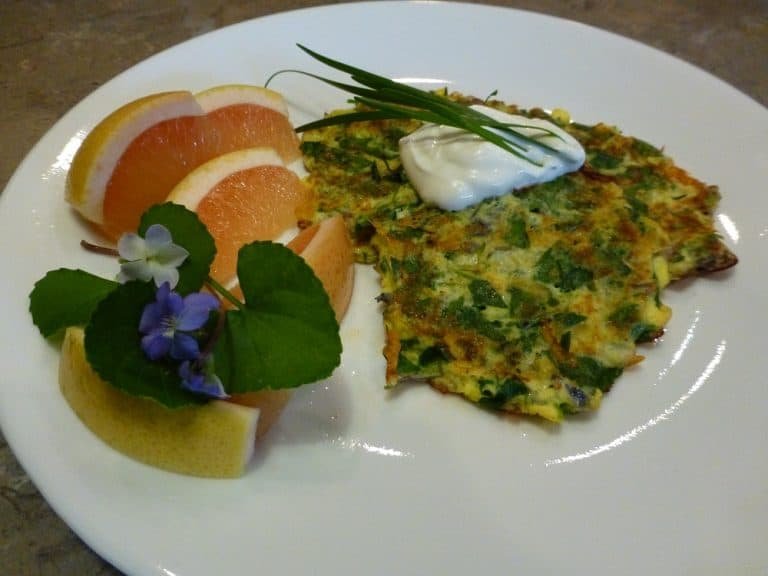Viola sororia
(Common Blue Violet)
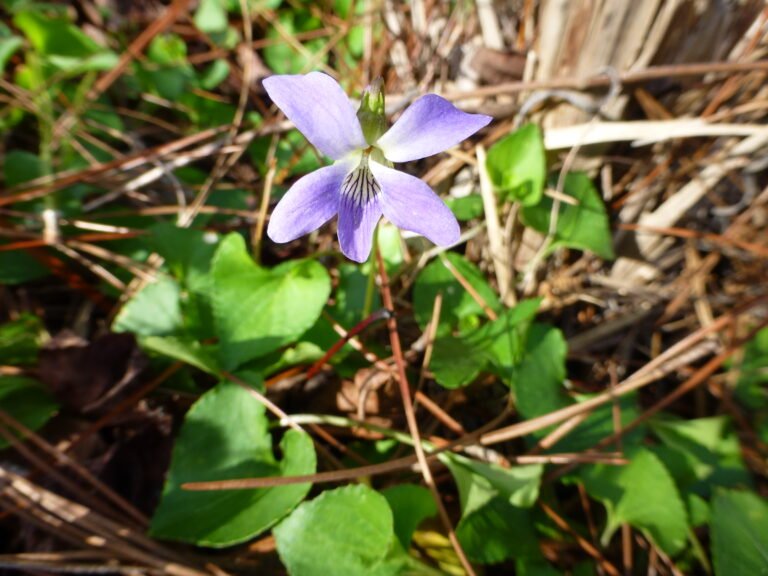
Common Names, Latin Name, and Family
Some of its other common names are blue violet, meadow violet, purple violet, wood violet, Confederate violet, sister violet, and dooryard violet.
Its Latin name is Viola sororia.
It is found in the Violaceae, or violet, family.
Form
A perennial wildflower that grows to a mature height of 10 inches.
Leaves
Blue violet’s leaves are basal and shallowly toothed.
They are stalked and the stalk length can vary from 1 – 4 inches.
They are triangular-ovate in shape and may appear heart shaped.
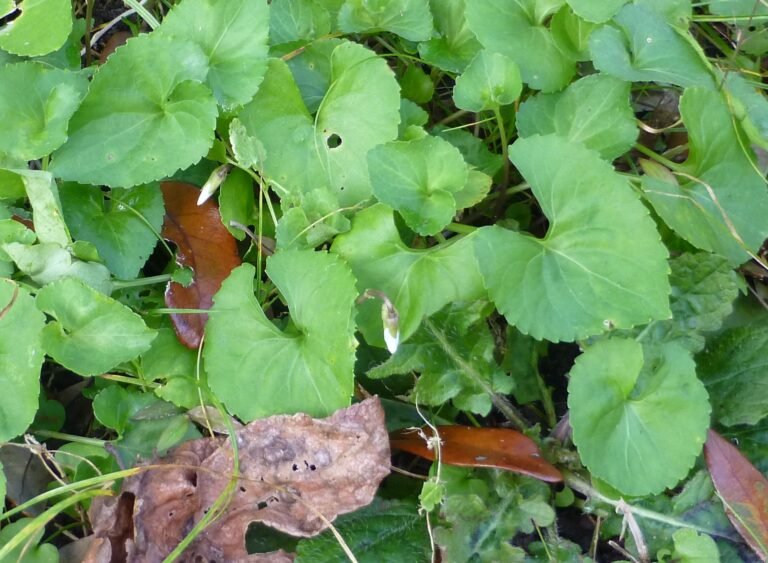
Flowers
Common blue violet flowers can come in all shades of violet and blue with some occasionally white or half white and half violet.
The blooms appear in Central Florida in the cooler months of winter and early spring. Once the summer heat kicks in the plants do not do well and seem to take a sleep until the weather gets cooler.
They have five petals, which include an upper pair, two side petals and a lower petal that is usually larger and has a spur at the base. The centers are usually white.
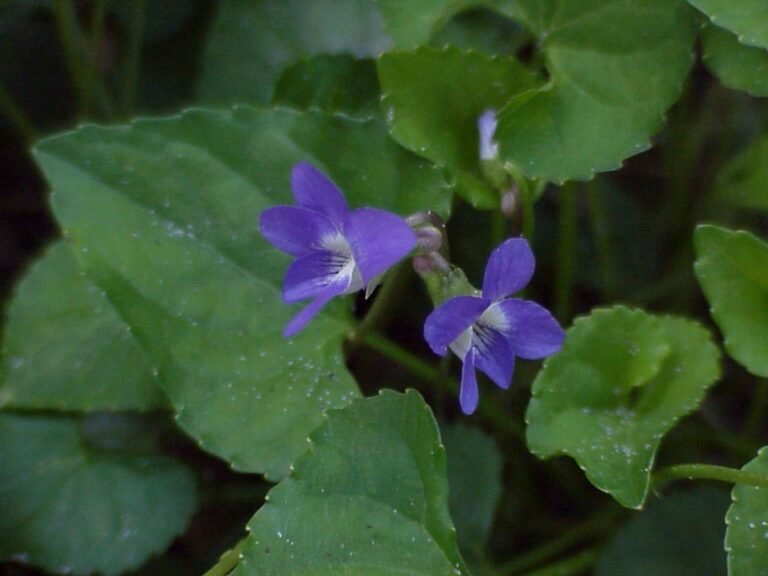
Fruit / Seeds
Once the flowers are pollinated the seeds begin to form.
They start out as green when unripe and then turn brown. Once they are fully ripe they split open and send the seeds flying far from the parent plant.
It can be difficult to harvest seeds because it takes just the right time. Too soon and they aren’t viable and too late and they have already been sent flying.
So if you collect seeds it’s best to check everyday and when the pods get brown check a few times a day or harvest when brown. Take care to hold the seed pod together because it may spring open and you will loose your seeds. Place it into a deep enough container so the seed won’t fly out if they open.
Habitat
The common blue violet occurs naturally in forests, oak hammocks damp sites such as the edges of moist meadows and fields, roadsides and along streams and lakes. The soil must drain well because they won’t survive in standing water.
Native Range
In Florida the common blue violet is found naturally occurring throughout most of the state.
In the United States the common blue violet is found in the eastern and central portion, north to Canada and south to Florida, and west to the Rocky Mountains.
Landscape Use
It the home landscape it grows in part shade with average to moist soils.
These tiny wildflowers can be tucked into just about any spot in the garden that is partially shaded. They also do well at the base of other plants in container gardens.
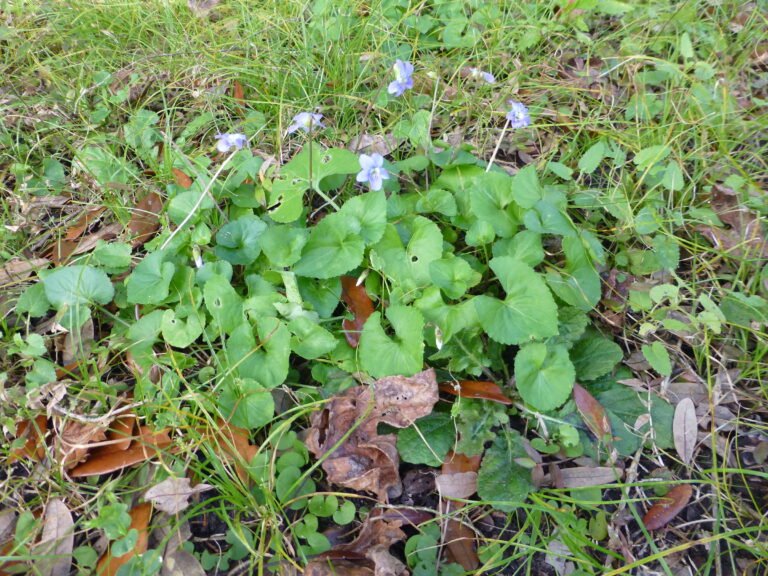
Wildlife Use
Bees and butterflies use the flowers as a nectar source.
The seeds, flower buds, flowers, and leaves are eaten by songbirds and small mammals.
Human Use
The flowers, flower buds, and tender leaves can be eaten out of hand in the forest and added to green salads to add a flare of color.
They can also be lightly cooked and added to savory pancakes, quiches, and frittatas. Check out my recipe link at the end of this article for savory Violet and Meadow Garlic Pancakes.
The flowers can be dipped in sugar and used as cake and cookie decorations. The flowers are fragile but it can be done. Most recipes call for dipping them in egg white first and then the sugar. I would suggest the thinner store bought egg whites because it is overall thinner, and lighter, than a fresh egg white. Just be gentle. Lay them on a screen or cooling rack to dry. Store the remaining ones in the refrigerator.
Propagation
It can be propagated by seeds, division, and transplants.
Violet seeds need cold stratification. They can be planted to weather the seasons naturally (by direct sowing or having pots outside from fall to spring) or stored in the refrigerator for 2-3 months.
This wildflower transplants very easily. It can be pulled up and put into pots or moved to other areas of your green space.
It is best to remove any flowers or seed heads so the plant can focus on its roots to recover.
Keep it moist until you see signs of new growth.
When dividing a large clump just gently pull the individual plants apart. The tubers can break easily so be gentle and careful. If a tuber is broken and has roots it may resprout.
Field Guide Recommendations
Do yourself a favor and purchase these two books if you use wild plants for food or medicine.
They could keep you from making mistakes in foraging.



